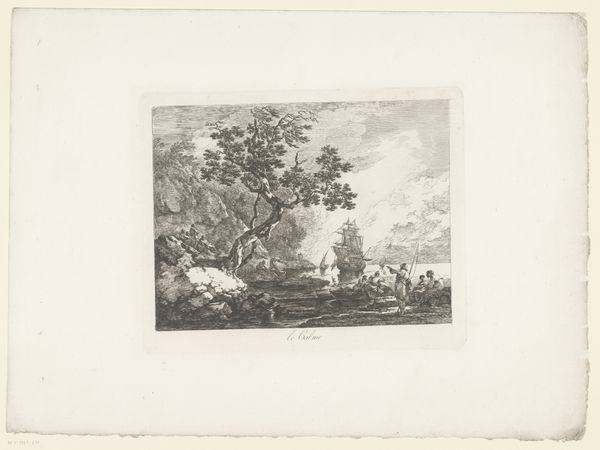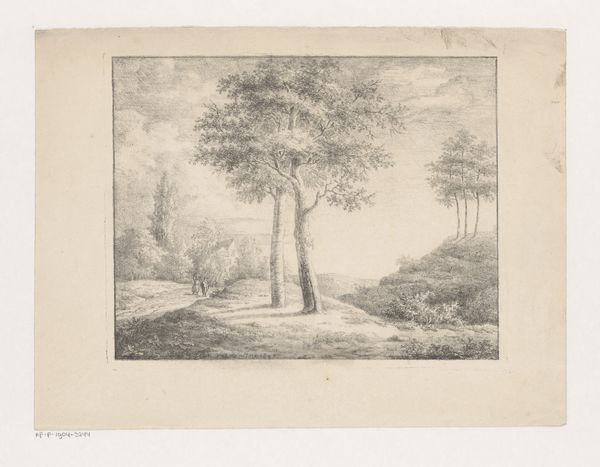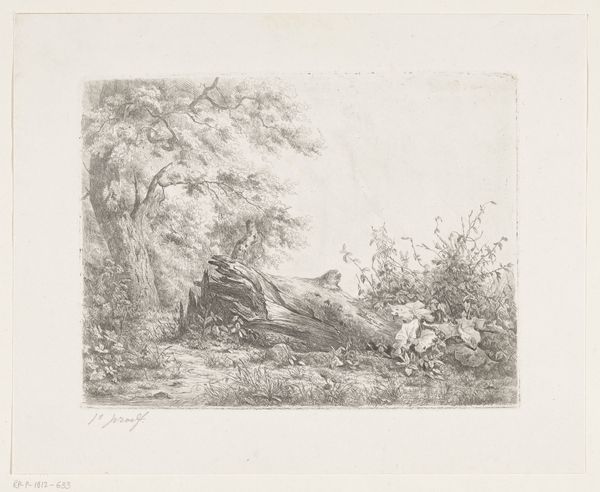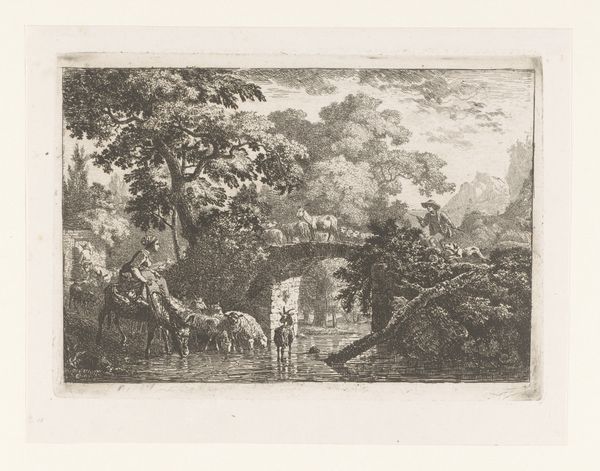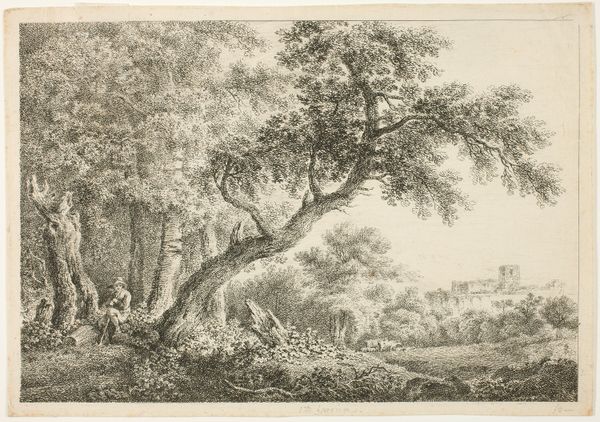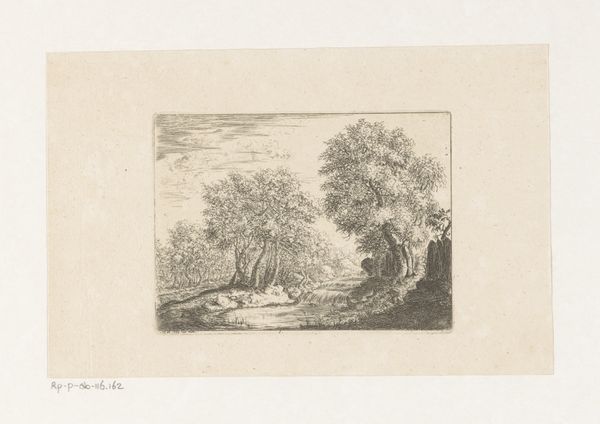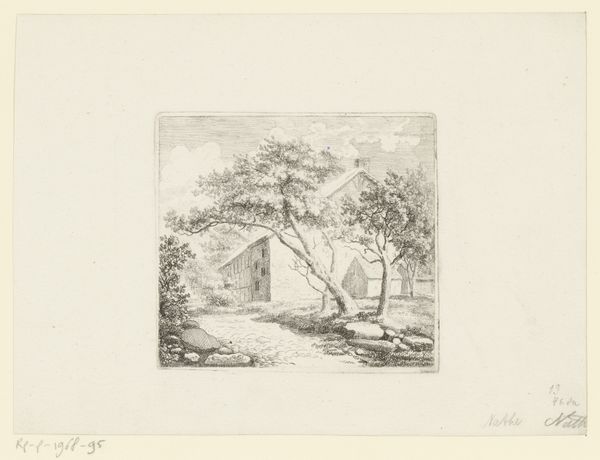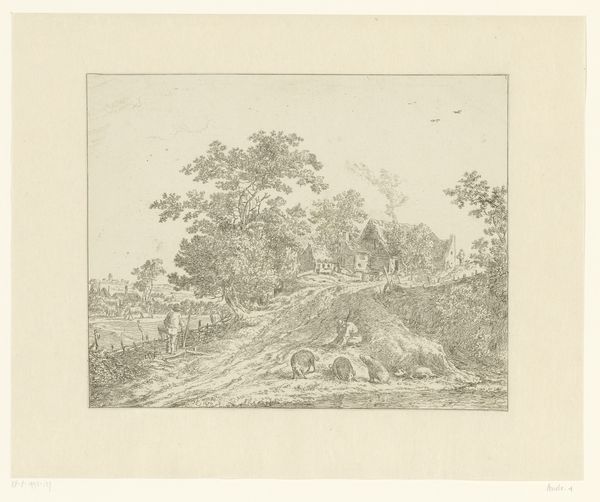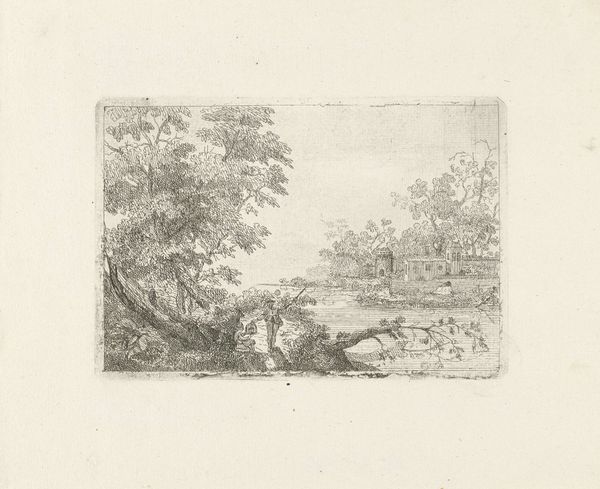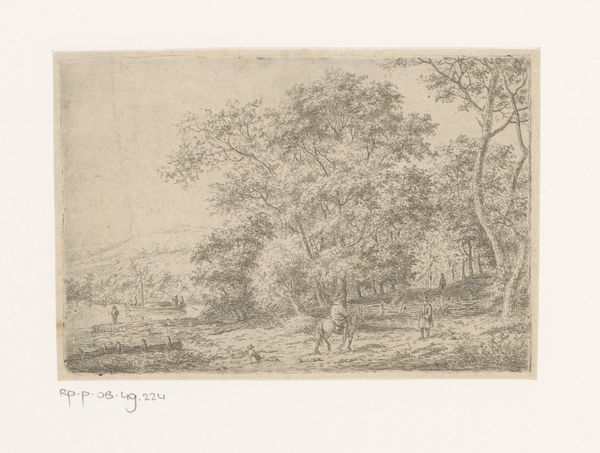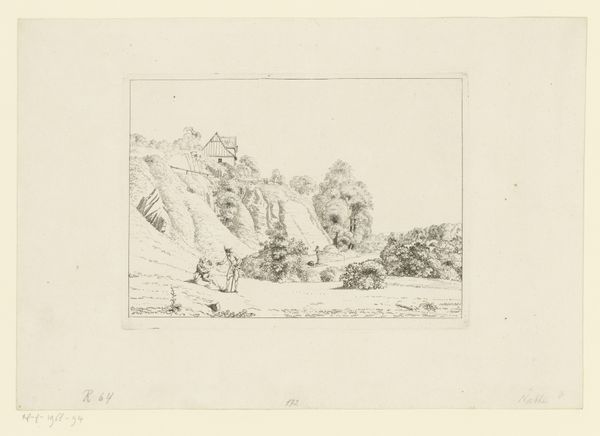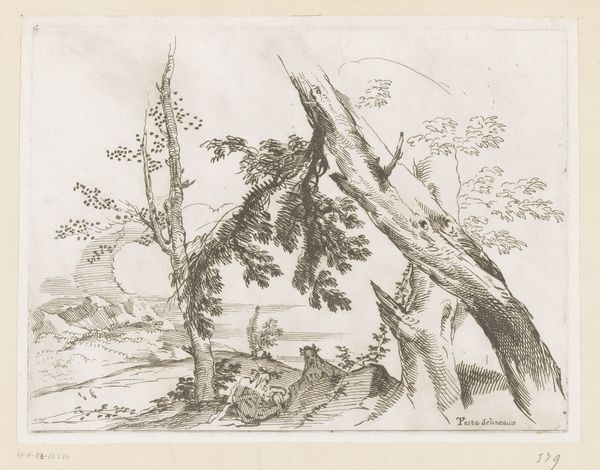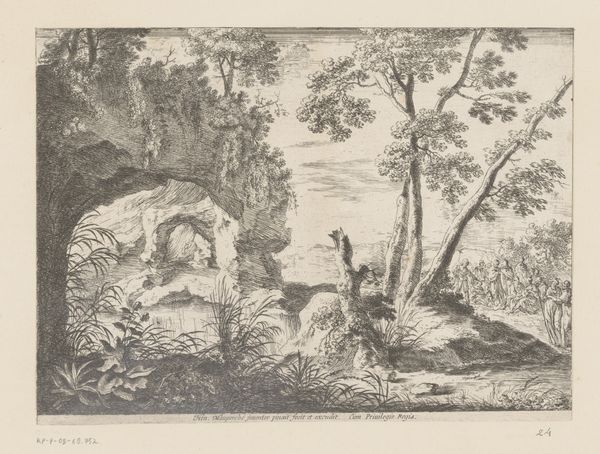
drawing, print, etching
#
drawing
#
neoclacissism
#
narrative-art
# print
#
etching
#
landscape
#
romanticism
#
history-painting
#
academic-art
Dimensions: Sheet: 12 5/8 × 18 7/8 in. (32 × 48 cm) Image: 8 3/4 × 13 1/16 in. (22.2 × 33.2 cm)
Copyright: Public Domain
Editor: We’re looking at "The Battery Group," an etching and drawing by Horace Vernet, made sometime between 1812 and 1822. The composition strikes me as intentionally casual, a scene of soldiers at rest amongst cannons and trees. What historical context shaped this depiction of military life? Curator: Vernet worked during a period where the visual representation of the military was deeply intertwined with political messaging. While the scene may appear casual, it's essential to consider the rise of nationalism after the French Revolution and the Napoleonic era. Vernet's imagery, especially his depictions of soldiers, helped cultivate a heroic image of the military and served to promote the state's agenda. How might this work be interpreted as propaganda? Editor: I hadn't considered that. So the seeming casualness might be a deliberate tactic to make the military seem relatable and reassuring, rather than imposing? But why the pastoral setting? Curator: Exactly. And the pastoral setting serves to naturalize and legitimize military presence within the landscape. It evokes a sense of ownership and connection to the land, suggesting the military’s role is not merely about conflict but about defending the nation’s very soil. Also, consider the impact of Neoclassicism and Romanticism, both prominent styles at the time, on portraying idealized, even glorified versions of contemporary events. How does this "group" compare to similar works portraying battle? Editor: I suppose, in other battle depictions I've seen, there's often an attempt to depict the moment of impact, while here we're seeing preparation. It seems far more… domesticated, less glorifying and perhaps more concerned with establishing a permanent narrative of occupation. Curator: Precisely! Vernet avoids the overt violence and instead presents a normalized military presence deeply rooted in society. We have seen that by looking closely, the image normalizes war by taking it away from actual fighting, allowing us insight into socio-political implications. Editor: This has offered a new perspective into reading beyond the surface of the piece. I see it much differently now!
Comments
No comments
Be the first to comment and join the conversation on the ultimate creative platform.
